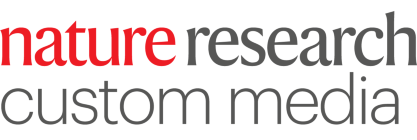
Auto-storage for dimethyl sulfoxide solution of compounds in 2D barcoded tubes stored at –20 °C.© Korea Research Institute of Chemical Technology
The tireless pursuit of treatments for the plethora of diseases humans face today, from painkillers and antibiotics to anti-cancer drugs, has created a mountain of data on countless chemical and biological compounds.
In recent years, the emergence of new viruses has highlighted the importance of carefully managed biobanks. When Middle East Respiratory Syndrome (MERS) appeared in South Korea in 2015, researchers performed high-throughput screening on more than 200,000 compounds at Korea Chemical Bank (KCB) to find one capable of treating MERS, and in so doing produced a wealth of biological data on the virus. When COVID-19 struck in 2020, researchers recognized similarities between the two viruses, and used the data on MERS stored by KCB to investigate and develop new drugs to treat COVID-19, some of which are now in preclinical trials.
KCB, part of the Korea Research Institute of Chemical Technology (KRICT), manages a library of around 700,000 compounds collected from research across South Korea. “Each compound, as a dimethyl sulfoxide solution, is stored at -20°C in 2D barcoded tubes containing information on their molecular structure, purity, and biological activities,” explains Sunkyung Lee, head of the KCB. “Quality control is essential. We ensure every compound in the bank is above 80% purity.”
Digging deeper
Some 2,000 researchers visit KCB website every month to browse the online library, using search criteria such as compound structure, target protein, or disease type. “When a researcher wants to dig deeper, they use our virtual screening processes including pharmacophore model generation based on binding data of target protein-ligand which rapidly identify the particular compound they need,” says Lee.
Since launching in 2000, KCB has provided around nine million compounds on 1,160 projects — about 70% to academia and the rest to industry — and they now support up to 200 projects each year.
“Academic researchers aim to make an effective and patentable compound, and then transfer it to industry,” explains Lee. “Our database provides valuable information on which compounds are active or not on a particular target. KCB also collects, analyses, and stores some compounds’ druggability data such as metabolic stability and cytotoxicity, saving researchers time so they can focus on their investigations,” says Lee.
Data analysis techniques have advanced rapidly in recent years, and KCB’s computer models, which use compound structures and biological data, are becoming increasingly accurate at predicting the activity of a compound on a specific target. “Researchers come to KCB to find a hit, and if it looks promising, they go on to optimize the hit, improving its efficacy and toxicity properties,” says Lee. Throughout the investigations, KCB gathers feedback on each compound’s screening data on efficacy and update its database accordingly.
Trash to treasure
Chemical banks can enable existing drugs to be repurposed, and even the negative data is useful as compounds discounted in one study might be useful elsewhere. “One scientist’s trash can be another scientist’s treasure,” says Lee. “By sharing all this information, KCB can help research have a much bigger impact than if every team worked separately.”
Over the past two decades, KCB has supported the discovery of numerous drug candidates, and also supported international collaboration research between South Korean researchers and foreign pharmaceutical companies.
“It takes a lot of time and effort to make one compound, and so much of the hard work yields no results. The real value comes when we combine our resources and share results,” says Lee. “This is one of the reasons we would like to expand our international collaborations. Because once a highly sought drug is created, it can become an invaluable resource that could improve the quality of life of patients everywhere.”



 Focal Point on Biological Resources in South Korea
Focal Point on Biological Resources in South Korea